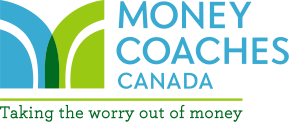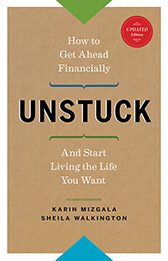Director, Financial Planning

Spring is around the corner, and along with the warmer weather comes tax season. This month, we would like to highlight a few changes to be aware of and share some helpful tips for preparing your 2022 taxes.
The Effects of Inflation
Inflation was felt by all of us in 2022, and it also affected important tax figures. The Canada Revenue Agency (CRA) used an inflation rate of 6.3% to index the 2023 tax brackets and other key amounts.
The Tax-Free Savings Account dollar limit for 2023 has increased for the first time since 2019, from $6,000 to $6,500. The cumulative TFSA limit is now $88,000 for someone who has never contributed to a TFSA and has been an adult resident of Canada since 2009.
The Registered Retirement Savings Plan deduction limit for 2023 is the lesser of $30,780 (up from $29,210 in 2022) or 18% of your earned income in 2022.
New Account for First-Time Home Buyers
The government has created the new First Home Savings Account (FHSA) which it hopes will be available from financial institutions within the next few months. This new registered plan gives prospective first-time home buyers the ability to save on a tax-free basis towards the purchase of their first home in Canada. There will be an annual contribution limit of $8,000 and a lifetime contribution limit of $40,000. Contributions to a FHSA will be tax deductible, similar to a RRSP, and withdrawals to purchase a first home will not be taxed, similar to a TFSA.
Other Changes for Homeowners
Several other changes related to homeownership came into effect at the start of 2023, including:
- The Multi-generational Home Renovation Tax Credit: This new credit is designed to help with the costs of renovating or constructing a secondary suite for a family member, who is a senior or an adult with a disability. The credit amounts to 15% of eligible expenses up to $50,000, resulting in a maximum benefit of $7,500.
- Anti-Flipping Tax: Starting in 2023, the principal residence exemption will no longer be available on the sale of your home if you’ve owned it for less than 12 months (with certain exceptions, including for death and divorce). Instead, the gain will be fully taxable as business income.
COVID-19 Benefits
If you were among the many Canadians who received COVID-19 government benefits in 2022, you will likely receive a T4A slip from CRA. Payments received from programs such as the Canada Recovery Caregiving Benefit (CRCB) and Canada Recovery Sickness Benefit (CRSB) are taxable. The amount shown on your T4A slip needs to be included in your 2022 return.
Generally, only 10% income tax was withheld on these COVID benefit payments. Depending on your net income, this may result in you owing additional taxes when you file your return.
If you repaid benefits in 2021 or 2022, you can choose to claim the deduction in the year you received the benefit or in the year you repaid it.
Working from Home?
Similar to the past two years, if you are an employee and worked from home due to COVID-19 more than 50 per cent of the time for a period of at least four consecutive weeks, you will likely be able to claim a deduction for home office expenses. Under the temporary flat rate method, you can claim $2 for each day you worked from home to a maximum of $500 in 2022. Or you can use the detailed method to claim the actual amounts you paid, provided you have the supporting documents and a signed T2200S or T2200 form from your employer. You can use CRA’s calculator to determine if the flat rate or detailed method is best for you.
Preparing your Tax Return
Since the traditional deadline of April 30 falls on a Sunday this year, the deadline to file your 2022 tax return is May 1, 2023. If you are self-employed or have a spouse or a common-law partner who is self-employed, the deadline to file your taxes is June 15, but all taxes owing must still be paid by May 1. Filing on time is important, not only to avoid penalties on amounts owing, but also to ensure you receive all the benefits to which you are entitled. The CRA has listed the steps involved in filing your 2022 taxes here.
Our Tax Preparation Checklist also outlines the information you’ll need to gather to file your tax return.
We hope this article helps guide you toward a less stressful and more organized tax season. If you have additional questions regarding how to best manage your cash flow, plan for retirement or improve your overall financial well-being, a Money Coach can help. Our Investment Report Card is also a great option if you’re looking for a second opinion on your investment portfolio.
NOTE: The author is not able to address comments/questions regarding an individual’s specific tax situation. To work with a Money Coach to address your tax planning needs, we encourage you to book a complimentary initial consultation.


